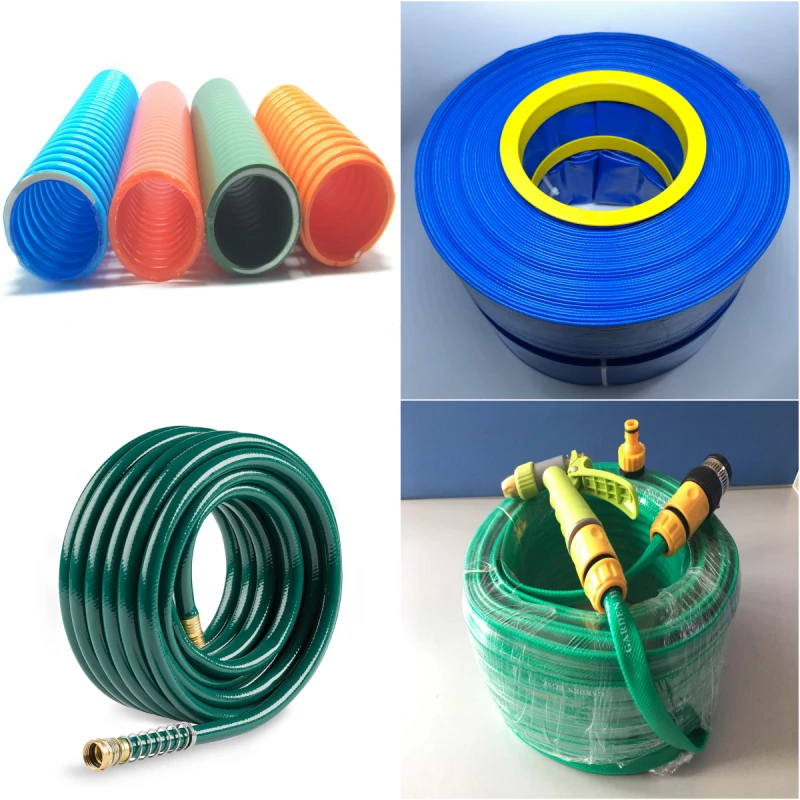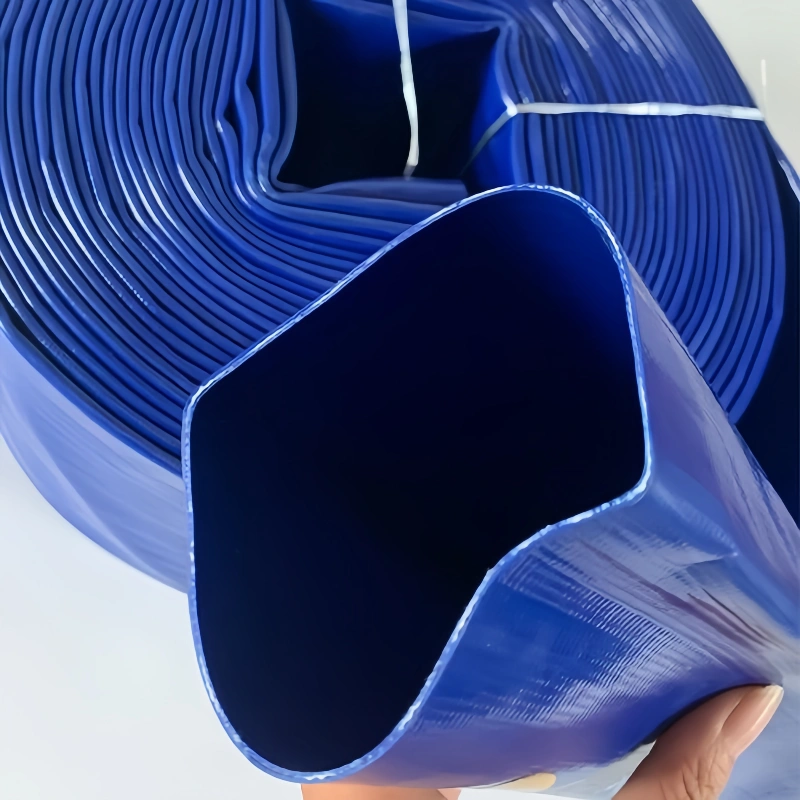How to Use a High Pressure Hose
High pressure hoses are essential for agriculture, construction, and industrial use. This guide explains how to use them properly with research-backed tips, safety precautions, and maintenance practices. Discover why QINGDAO RENATO PLASTIC CO., LTD is your trusted supplier of durable PVC hoses worldwide.

Introduction
High pressure hoses are an essential tool in multiple industries, from construction and agriculture to firefighting, mining, and even household cleaning. They are designed to transport water, air, or other fluids at elevated pressure levels safely and efficiently. However, improper usage can lead to reduced efficiency, hose damage, or even accidents.
This article provides a comprehensive guide on how to use a high pressure hose, supported by industry research data and practical usage tips. We will also cover different applications, safety precautions, and maintenance practices. For businesses and individuals seeking high-quality hoses, QINGDAO RENATO PLASTIC CO., LTD is a trusted manufacturer with over 15 years of experience, offering PVC hoses and assemblies to more than 60 countries.
What is a High Pressure Hose?
A high pressure hose is a flexible tube designed to carry water, air, or other fluids at high pressure. Compared to regular hoses, they feature stronger reinforcement layers, abrasion-resistant materials, and fittings that withstand intensive usage.
Common Uses of High Pressure Hoses
Agriculture: Irrigation and spraying.
Construction: Supplying water to tools, concrete curing, and cleaning.
Industrial Applications: Air supply, chemical transfer, and hydraulic systems.
Firefighting: Quick deployment for extinguishing fires.
Household: Pressure washing cars, driveways, and outdoor equipment.
Research Data: Hose Performance Standards
According to ISO 7751 and EN 853 standards, the performance of high pressure hoses is evaluated based on burst pressure, working pressure, temperature range, and flexibility. Below is a comparison of typical pressure ranges:
Table 1: Typical Pressure Ratings of High Pressure Hoses
| Hose Type | Working Pressure (bar) | Burst Pressure (bar) | Temperature Range (°C) |
|---|---|---|---|
| PVC High Pressure Hose | 40–60 | 120–180 | -10 to 60 |
| Rubber High Pressure Air Hose | 80–120 | 240–360 | -20 to 80 |
| Steel Wire Reinforced Hose | 150–400 | 600–1600 | -40 to 100 |
| Layflat High Pressure Hose | 30–80 | 90–240 | -10 to 60 |
Source: ISO, DIN hose testing data.
This research shows why choosing the correct hose for each application is critical. Using a hose outside of its designed pressure or temperature range can cause dangerous failures.
Step-by-Step: How to Use a High Pressure Hose
Using a high pressure hose properly involves preparation, operation, and aftercare.
1. Preparation Before Use
Check specifications: Ensure the hose matches the pressure and fluid type of the system.
Inspect fittings: Verify that camlock, storz, or nozzle fittings are properly attached and free of leaks.
Lay out the hose: Avoid sharp bends or kinks before pressurizing.
2. Connecting the Hose
Attach the hose to the pump or compressor securely.
Use hose clamps or quick couplings (such as camlock fittings from QINGDAO RENATO PLASTIC CO., LTD) for a leak-proof seal.
Test the connection with low pressure before applying full operating pressure.
3. Operating the Hose
Start gradually, increasing pressure step by step.
Maintain a safe distance when discharging water or chemicals.
Avoid dragging the hose across sharp edges or hot surfaces.
4. After Use
Release pressure slowly to avoid shock damage.
Drain water to prevent freezing or bacterial growth.
Store the hose in a cool, dry location, preferably on a reel.
Safety Precautions When Using High Pressure Hoses
Improper use of high pressure hoses can cause serious injuries. According to the Occupational Safety and Health Administration (OSHA), hose-related incidents in industrial settings account for over 12% of fluid injection injuries annually.
Table 2: Common Hose Hazards and Safety Solutions
| Hazard | Potential Consequence | Safety Solution |
|---|---|---|
| Hose burst under pressure | Injuries, property damage | Always use within rated pressure and inspect regularly |
| Loose fittings | Leaks, spray injuries | Use proper couplings and tighten clamps securely |
| Kinking or twisting | Reduced flow, hose rupture | Lay out straight, avoid sharp bends |
| Heat or chemical exposure | Material degradation | Select hose material resistant to chemicals/heat |
| Improper storage | Reduced lifespan, cracks | Store in dry, shaded areas, use reels |
Maintenance Tips for Longevity
To maximize efficiency and safety, follow these maintenance practices:
Regular Inspection – Check hoses weekly for cracks, blisters, or leaks.
Pressure Testing – Conduct hydrostatic tests every 6–12 months.
Clean After Use – Flush out chemicals, mud, or debris.
Replace When Needed – Industry research shows that PVC hoses last 3–5 years, while rubber hoses can last up to 10 years under proper maintenance.
Table 3: Average Lifespan of Different Hoses
| Hose Type | Average Lifespan (Years) |
|---|---|
| PVC High Pressure Hose | 3–5 |
| Rubber High Pressure Hose | 5–10 |
| Steel Wire Hose | 7–12 |
| Layflat Hose | 5–7 |
Applications of High Pressure Hoses Across Industries
High pressure hoses are not “one-size-fits-all.” Research data from MarketsandMarkets suggests the global hose market is expected to reach USD 14.7 billion by 2027, driven by agriculture and industrial growth.
Key Industry Applications:
Agriculture: Irrigation, pesticide spraying, slurry discharge.
Construction: Water supply, concrete cooling, equipment cleaning.
Mining: High-pressure slurry transport, dust suppression.
Firefighting: Emergency water delivery with storz couplings.
Household: Car washing, outdoor cleaning with pressure washers.
Why Choose QINGDAO RENATO PLASTIC CO., LTD?
When selecting a supplier, reliability and quality matter most. QINGDAO RENATO PLASTIC CO., LTD stands out with:
15+ years of experience in PVC hose manufacturing.
Wide product range: Layflat Hose, Suction Hose, Fiber Reinforced Hose, Steel Wire Hose, Garden Hose, Mix Rubber High Pressure Air/Water Hose, Canvas Hose, and more.
Complete assemblies: Camlock fittings, storz fittings, nozzle fittings, hose clamps.
Large production capacity: 10 workshops, 60+ production lines, 120 workers, 5 technicists, 2 QC teams.
Global reputation: Exporting to 60+ countries with strong customer satisfaction.
Customer-first philosophy: 24/7 quick response service.
Whether you need hoses for water supply systems, irrigation, or industrial discharge, Renato Plastic ensures long-lasting, high-performance solutions.
Conclusion
Knowing how to use a high pressure hose properly can save costs, improve efficiency, and enhance safety in both professional and domestic settings. From selecting the right hose type to following operating and maintenance steps, users can maximize hose performance and lifespan.
For businesses, partnering with a trusted manufacturer like QINGDAO RENATO PLASTIC CO., LTD ensures access to high-quality PVC hoses and assemblies that meet international standards. With more than 15 years of expertise, a wide product line, and global recognition, Renato Plastic is your reliable partner in hose solutions.
Contact us today to find the right high pressure hose and assemblies for your needs.

